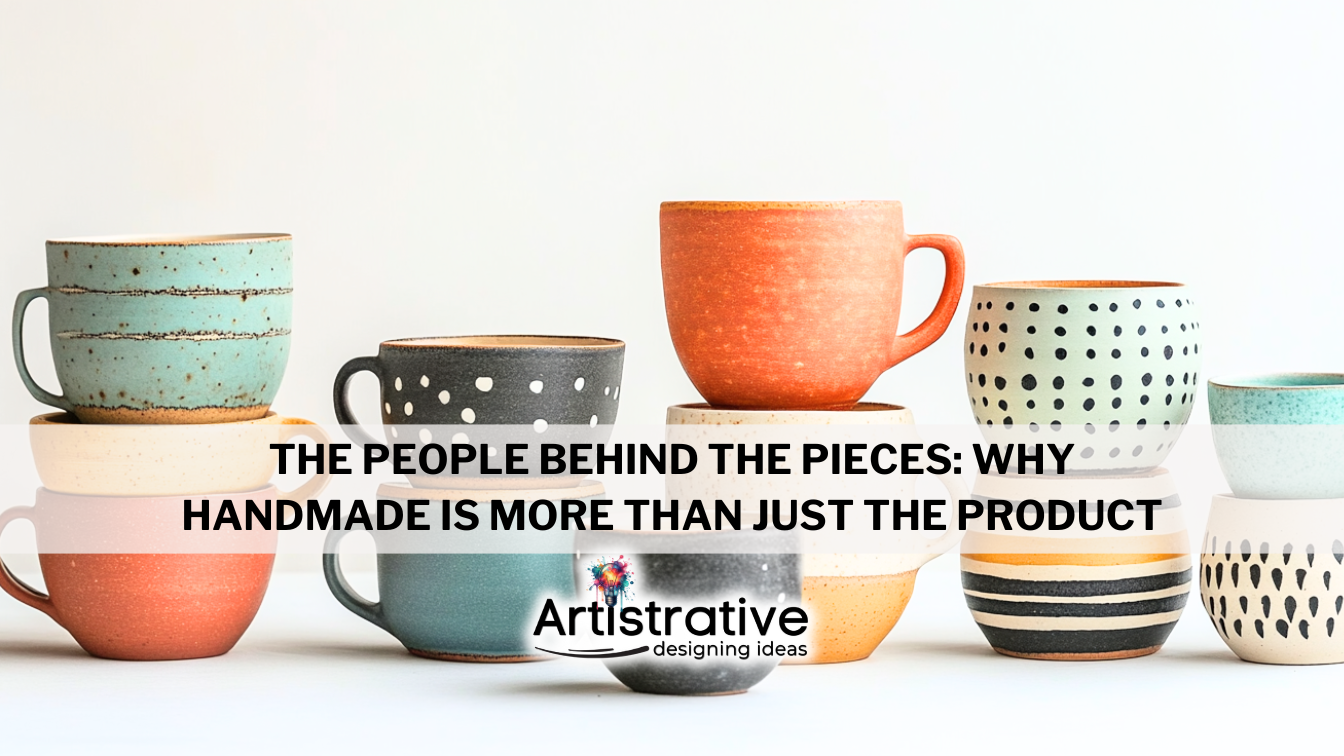Every morning when I reach into my cupboard, I’m greeted by a set of handmade pottery dishes. They have character—slight variations in the glaze, the subtle marks of the maker’s hand, the kind of beauty that only comes from something made with intention. They’re sturdy, beautiful, and uniquely mine—but what makes them truly special is that I know who made them.
I met the potter. We’ve crossed paths many times over the years, and I’ve come to appreciate not just their skill, but the care and consistency behind their work. And because of that, these pieces are more than just dishes. They’re daily reminders of the connection between maker and user, a quiet kind of gratitude that mass-produced items just don’t evoke.
This is one of the wonderful parts of buying handmade—you often get to meet the maker. You learn their story, see their passion, and understand a little bit of what went into creating the item you now call your own. Handmade goods carry a bit of the person who made them, which is what makes them feel personal and meaningful.
But that connection depends on more than just the product itself—it’s shaped by the interaction that surrounds it.
Some time ago, I had planned to purchase another handmade item. I was genuinely excited about it. But when I spoke with the maker, the interaction was… disappointing. It wasn’t just a lack of friendliness. The interaction carried a tone of arrogance that made it hard to imagine bringing that person’s work into my home. At first, I tried to give them the benefit of the doubt—maybe it was just a bad day—but after several similar experiences, it became clear that the dismissiveness and self-importance weren’t exceptions. They were the norm. And no matter how well-made something is, if it reminds me of a negative experience, I won’t enjoy using it. And I certainly won’t treasure it.
That moment stayed with me. Not because I missed out on a product, but because it was such a sharp contrast to what handmade should represent.
Makers aren’t just selling a thing—they’re sharing a piece of themselves. That means the how is just as important as the what. It’s not enough for the item to be well-crafted (though of course, that matters too). The display should be eye-catching and thoughtfully arranged—it’s what pulls people in. But once someone steps closer, it’s the interaction that leaves the lasting impression. The atmosphere around the booth should feel welcoming, and the maker should understand that they’re building relationships, not just transactions.
Surface-level pleasantries—smiles, small talk, polite thank-yous—are easy enough. But if they’re delivered with arrogance or disinterest, they fall flat. What really matters is authenticity. Buyers don’t just remember what you said—they remember how you made them feel.
If you’re a maker, I hope this resonates: your work matters, and you matter just as much. You’re part of the story people are buying into—and the experience you offer will echo long after the item leaves your hands.
FOLLOW ME on social media for more tips and information: FACEBOOK | INSTAGRAM
